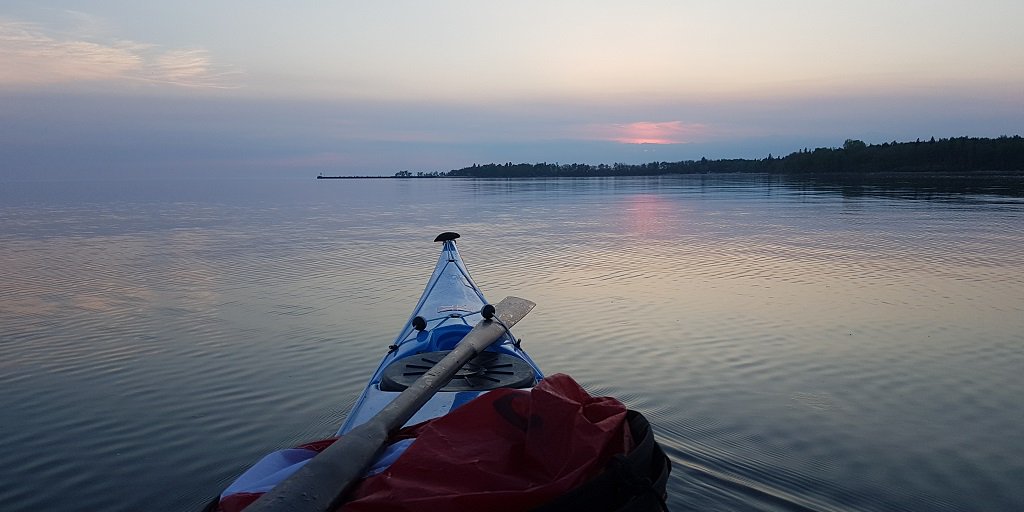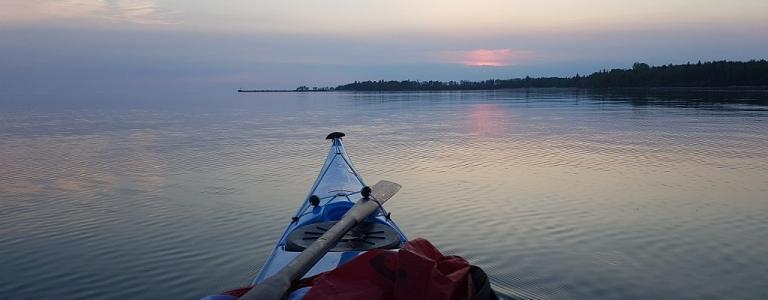City Voters Should Keep Lake Winnipeg in Mind
Unfortunately, sewage treatment infrastructure doesn’t tend to rank among the most popular of campaign topics in Canadian elections.
Potholes and intersections, stadiums and arenas — infrastructure spending always looms large as we head to the ballot box. Unfortunately, sewage treatment infrastructure doesn’t tend to rank among the most popular of campaign topics in Canadian elections. But it may well be that our wastewater infrastructure will ultimately have the greatest impact on our quality of life — and our pocketbooks — over the long term.
Our sewage treatment systems deliver the water used in our homes and industries directly into the lakes and rivers we use for recreation. Toilet water ultimately becomes lake water — all that stands between the two is our wastewater infrastructure.
So we would be wise, at election time, to take notice of how our elected officials are handling wastewater treatment. Now is our chance to make some critical decisions about the future of fresh water in our province.
Lake Winnipeg is being choked by algae that damage water quality, erode economic opportunities in lakeshore communities and degrade the health of this vibrant ecosystem. Thanks to research conducted at IISD Experimental Lakes Area, we know that phosphorus is the cause of these algae blooms — to address them, we must focus on immediate and aggressive reduction of phosphorus loading to Lake Winnipeg and its tributaries.
The single largest phosphorus contributor to Lake Winnipeg is the City of Winnipeg’s North End Water Pollution Control Centre.
Under its Environment Act licence, the city must ensure that phosphorus emissions from the sewage plant do not exceed 1.0 milligram/litre (mg/L) by Dec. 31, 2019. To put this target in perspective, phosphorus concentrations from the sewage plant averaged 3.54 mg/L in 2017 — that’s 600 kg of phosphorus released downstream every day.
The city tells us that plans are in the works for sewage plant upgrades using biological nutrient removal technology, which would enable phosphorus, as well as other nutrients and pollutants, to be reduced. This is an admirable and necessary long-term step. But, there’s a catch: this full plant upgrade will take at least 10 years to implement, meaning we miss the Dec. 31, 2019, deadline by a long shot.
In the meantime, we continue to exceed phosphorus limits in effluent released into the lake every single day — just by flushing our toilets and draining our dishwater.
With the regulatory deadline fast approaching and Lake Winnipeg’s health declining, the proverbial tap is dripping. It’s time we consider more immediate interventions that will enable us to protect our water until permanent upgrades can be completed.
Cost-effective interim solutions are available. Chemical treatments, such as those that use iron salts to reduce phosphorus concentrations in wastewater to 1.0 mg/L, have long been the standard in jurisdictions throughout Ontario and in U.S. cities such as Detroit. Faced with water quality problems of their own, these jurisdictions have not only risen to the challenge — they are now working to meet new limits of 0.5 or even 0.1 mg/L.
Back in Winnipeg, meanwhile, the most recent North End sewage plant compliance reports indicate that we released at least nine times that (4.5 mg/L!) in July 2018. At a time when so many of us were heading out to the lake to enjoy a day at the beach, we were simultaneously pumping staggering amounts of algae-causing phosphorus into its waters.

Winnipeggers vote on Oct. 24. As the election campaign continues and we are asked to consider our priorities, let’s make sure that we don’t forget about cleaning up our own mess to help our beloved Lake Winnipeg.
It’s time to put our money where our mouth is by investing in an immediate, cost-effective solution to address the largest single source of phosphorus to the lake. Doing so will take us one step closer to safeguarding the future of fresh water in our province — and protecting all those future days at the beach.
Alexis Kanu is executive director of the Lake Winnipeg Foundation.
Dimple Roy is director of water policy at the International Institute for Sustainable Development.
The op-ed first appeared in the Winnipeg Free Press on Thursday, October 11, 2018.
You might also be interested in
Way to Go Winnipeggers
Winnipeg is getting even closer to increasing the protection of Lake Winnipeg from harmful algal blooms. And it's thanks to Winnipeggers of all stripes!
How to Build a Floating Wetland
Not only do floating wetlands look super cool, they could help us keep fresh water free of whole range of pollutants—maybe even oil spills! Madeline and Richard take us through how to make one, in this short video.
Northwest Ontario Side Story: IISD Experimental Lakes Area Annual Report 2022-2023
This year's annual report is a celebration of all things creative at the world's freshwater laboratory, from the science to music, photography and theatre.
Freshwater connectivity can transport environmental DNA through the landscape
A new study conducted at IISD-ELA found that the movement of water between freshwater bodies can transport eDNA which complicates the question of how accurately it can be used to monitor species.
